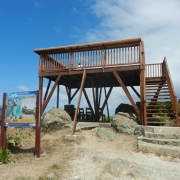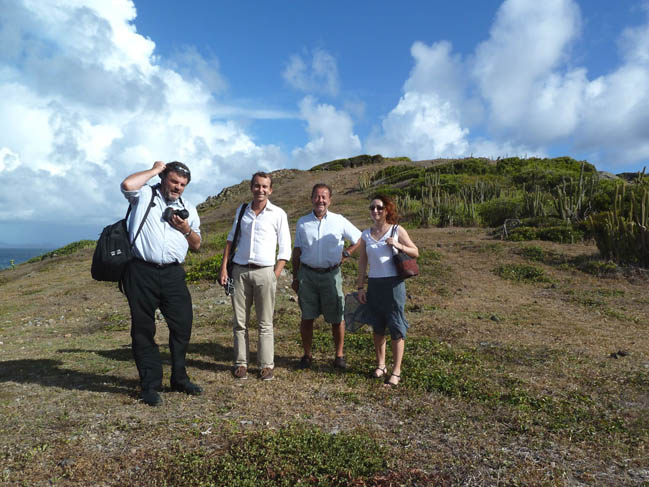The Conservatoire du Littoral, whose role is to protect natural sites and coastlines in France by shielding them definitively from construction, also plays a role in Saint Martin, where it owns and protects 355 hectares (almost 880 acres) on the island.
The sites include 14 salt ponds (roughly 200 hectares), natural coastlines (about 85 hectares, comprising all adjoining land that is classified with the nature preserve), and finally the outlying islands (Pinel, Tintamare, Petite Clé, Caye Verte, Rocher Créole, Rocher de l’Anse Marcel and Grand Ilet in the Simpson Bay lagoon). In addition to protecting the land, the Conservatoire also improves these areas, working to conciliate their preservation with public usage: from restitution of deteriorated eco-systems to improvements for the public (botanical paths, observatory, shelters…).
The management of these sites has been entrusted to the Réserve Naturelle, which works hand-in-hand with the Conservatoire.
Working in Saint Martin from July 16-20, 2012, the Conservatoire’s overseas delegate, Marc Duncombe, took a look at all the ongoing dossiers.
Accompanied by Romain Renoux, director of the Réserve and representative of the conservatoire in Saint Martin, and by Béatrice Galdi, responsible for Conservatoire in Saint Martin and Saint Barthélemy, Duncombe first met with prefect Philippe Chopin, who invited him to attend next Conseil des Rivages Français d’Amérique (CRFA), to be held in Saint Martin and Saint Barth in April 2013.
Duncombe also met president Alain Richardson -who, along with Christophe Hénocq, represents the Collectivity at the CRFA- and discussed the challenges of the Conservatoire on the island, including the important issue concerning the expropriation of land with the ruins of a hotel near Galion Beach, with an eye toward rehabilitation of the site. Within the framework of another project, Duncombe met with the president and vice-president of the Association Syndicale Libre of Oyster Pond (ASLOP) and reconfirmed the Conservatoire’s interest in the site at Babit Point, which partially belongs to the ASLOP.
Of great environmental interest, this site houses an important colony of melocactus -or Turk’s Head cactus- a protected species native to the Lesser Antilles.
Duncombe also met with the directors of the two restaurants that have temporary authorization along the coastal area belonging to the Conservatoire on the island of Pinel.
He agreed there were good environmental practices in place for this site for several years now.
Concerning the protection of the salt ponds, Duncombe expressed his concerns about runoff and purification of gray water in relation to the anticipated installation of several water treatment plants whose runoff could impact several of the ponds.
In principal, the Conservatoire is not opposed to such installations, but it needs guarantees about the quality of the water treatment and the maintenance of the installations, so that they do not in any way have a negative effect on the overall health of the ponds. Duncombe also expressed interest in other ongoing projects such as the whale-watching observatory near Coralita, and just a few steps away, the land recently cleaned up at the mouth of the Etang aux Poissons.
 The whale-watching observatory near Coralita © Conservatoire du littoral
The whale-watching observatory near Coralita © Conservatoire du littoralThis is a site where the Conservatoire, in conjunction with the Réserve and the Collectivité, has plans for an environmental restoration project with public access.

















